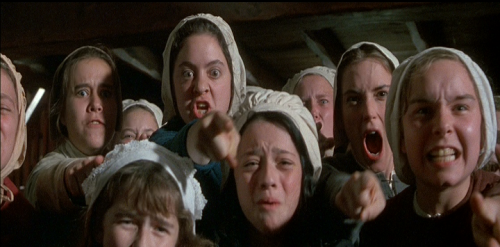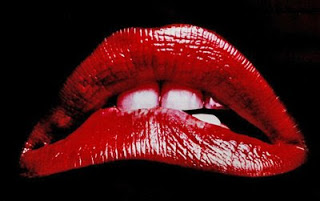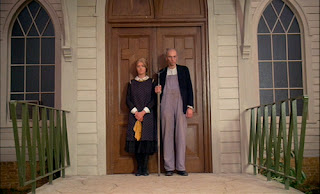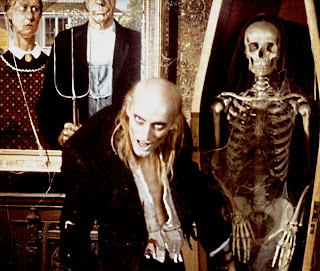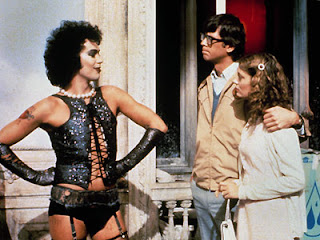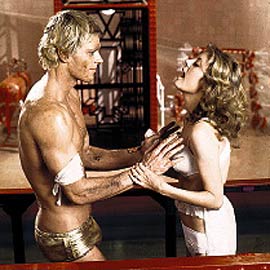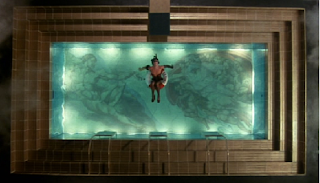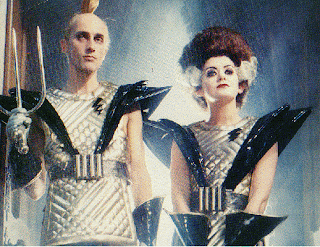This guest post by Laura Shamas appears as part of our theme week on The Terror of Little Girls.
When I first saw Arthur Miller’s The Crucible as a child, I found it utterly terrifying; why could this crowd of girls see and feel things that no adult could? Later, studying it in school and learning about its allegorical references to McCarthyism in the 1950s, I appreciated this American theatre classic at a deeper level. Miller’s examination of the Salem Witch Trials, held in the Province of Massachusetts Bay from 1692-3, depicts the internal, secretive drive of a New England witch hunt, and how paranoia quickly escalates to devastate a marriage, a family, neighbors, and eventually, to cripple an entire community. The actions of little girls set it all in motion.
The Crucible had its premiere on Broadway in January of 1953. In his 1987 memoir Time Bends: A Life, Miller describes a 1952 flash of understanding of “the Puritan cult” upon viewing etchings and woodcuts on the walls of the Historical Society Witch Museum: “Portrayed were the afflicted innocent girls pointing in terror at some farmer’s wife who was secretly persecuting them and yet stood in proud contempt of their Christian accusations” (p. 42).
Much as been written about Miller’s “fictionalization” of the Salem trial accounts, e.g., the conflation of characters, and the changing of characters’ ages. For example, accuser Abigail Williams was around 11 years old during the actual trials, not 17. John Proctor was about 60, not a youthful man. In 1996, Miller responded to some of this, as quoted in the New York Times: “My job as a dramatist is to create a drama, not documentary history—any more, if I may say, than Shakespeare had in mind when he created his kings and characters who had very little resemblance to the real people.”
When I saw the 1996 film of The Crucible, penned by Miller and directed by Nicholas Hytner, I was struck by its depiction of the condemnation of female sexuality in the Puritan world. The theme of “the witch as female scapegoat” is applicable to the film. Miller mentions female sexuality perceived as horror in a 1996 NY Times op-ed entitled “Salem Revisited”: “Witch hunts are always spooked by women’s horrifying sexuality awakened by the superstud Devil. In Europe, where tens of thousands perished in the hunts, broadsides showed the Devil with two phalluses, one above the other. And of course mankind’s original downfall came about when the Filthy One corrupted the mother of mankind.”
In “Salem Revisited,” Miller describes Puritanical views of race and sexuality related to Tituba from Barbados, who was enslaved to Reverend Samuel Parris at the time of the trials. As one of the few people of color in Salem Village, Tituba was abused and treated as Other. Miller notes: “Tituba was tortured into naming women she had seen with the Devil, thus starting the hunt on its way. The conflation of female sexuality and blackness in a white world is an old story, and here it had lethal result.”
Due to space limitations, I’ll narrow my analysis to three key scenes in the film: the opening dancing scene in the forest, the first accusation scene near Betty’s bed, and a courtroom “yellow bird” scene near the end, involving the condemnation of Mary Warren (Karron Graves), who works for John (Daniel Day-Lewis) and Elizabeth Proctor (Joan Allen).
In a marked difference from the play’s opening, the movie begins at night as teenaged Abigail Williams (played by Winona Ryder) awakens a young girl named Betty Parris (Rachael Bella). Together, they sneak out of the house, lit by a full moon, and head into the dark woods; other girls join them. The group of giggling Puritan girls, ranging in ages from about 6 to 17, tramp through the wild forest together until they reach a ceremonial campfire. When they’ve gathered in a circle, Tituba (Charlayne Woodard) asks: “What’d you bring me?” The girls each put something into a boiling cauldron at the fire’s center–an herb or toad, and a boy’s name is uttered as part of a spell. Young Betty, notably, says nothing but puts something into the pot. Abigail supplies a live black chicken for the brew. Tituba twirls the animal above her head as part of a ritual, and sings in another language. The girls dance and sway to Tituba’s music, and express their longings for certain young men or boys, by name. Although Abby says nothing, the other girls volunteer that Abby wants John Proctor for her love match. Then suddenly, Abby takes the chicken from Tituba, smashes its head, and is splattered with blood. She smears it onto her face. This inspires the other girls to scream, and a few of them disrobe, dancing in “hysteria.”
Suspicious Rev. Parris (Bruce Davison) comes upon their gathering. Someone yells, “It’s the minister!” The girls run. Parris’ daughter Betty, held by Abigail, shouts, “I can’t move, I can’t move.” Alone by the fire, Parris discovers a toad in the pot. The next morning, back at Parris’ home, where his niece Abigail resides, too, Betty can’t move or speak. Eventually, an exploration of Betty’s catatonic condition leads to conjuring charges against Abigail and Tituba. As Betty begins to “wake up,” she says she was trying to contact her dead mother in the ritual and wants “to fly” to her. “Keep still, you little devil,” someone replies, already setting the tone for the demonization of the girls. Alone with the girls later, Abigail cruelly threatens them to keep quiet about what really happened that night.
This opening ritual scene establishes the adolescent girls as a group, a collective, or as a female chorus found in ancient drama. Ringleader Abigail and servant Tituba stand out in the first scene, as well as young Betty and Mary Warren, but the other girls are part of a pack, expressing an ardent interest in magic to woo young men: they exhibit a supernatural interest in romance, an eagerness to “short-cut” courtship with a spell. The wild young girls in the woods, with exceptions noted above, are established as monolithic, secretive, lusty, rule-breaking, and unfazed by the use of spells–or in other words, in league with the Devil. Their charm contributions to the boiling cauldron, which could be seen as a fiery womb symbol, are indicative of their acceptance of the dark arts; their spontaneous wanton disrobing, seemingly for Satan, signifies the magnitude of their repressed lust. This moonlit spectacle depicts the “horror” of budding female sexual desire from a Puritan perspective.
Abigail, in an early scene with Proctor, forces a kiss on her former lover, even as he calls her “child” and says he’ll cut off his hand before he becomes involved with her again. This short exchange reinforces the concept of “female as sexual aggressor” in the film.
By night, the Salem girls are presented as believers in conjuring, but by day, we find them seated together in a church space for questioning by the newly arrived demonology expert Reverend Hale (Rob Campbell). The girls are costumed in a rainbow array of solid colors, each a different hue; the rainbow imagery visually associates them with “light” and iridescence. The shadow/light dichotomy of the girls is highlighted here, for, in daylight, the group reflects innocence and purity—and in this scene, even a love of Christianity.
Abigail, under questioning, accuses Tituba of magic. This leads to another sequence that presents the Salem girls as terrorizing: after tortured Tituba blesses the Lord, she begins to name Salem women as witches, to appease her brutal owner Parris. Abigail suddenly declares: “I want the light of God! I want the sweet love of Jesus! I did dance with the Devil. I saw him. I wrote in his book. I go back to Jesus. I kiss his hand.” And then she adds: “I saw Sarah Good with the Devil!” The other girls take up this refrain, supplying the names of myriad local women—and a man. They name Bridget Bishop, George Jacobs, Goody Howe, Goody Sibber, Goody Pike, and many more, as “with the Devil.”
Seeking revenge on Salem adults who’ve wronged them, the girls line up on a stairwell and function as a chorus of young female accusers. Reverend Hale yells: “Hallelujah! Glory Be to God! It is broken. They are free!” The adults who witness this scene believe the girls’ accusations, even though there’s no proof; a jailer is summoned to imprison the accused. Abigail’s reaffirmation of her love of Christ makes her “pure” again in the eyes of the adults. The fickle nature of the girls is established in this scene; opportunistically, they accuse innocent people in order to save themselves from the soul-damning charges of witchcraft. They have their scapegoats; they will not be blamed. Their volatile swing from “Satan to Jesus” helps to launch the witch trials that will claim 20 lives: 19 hangings, and one man pressed to death.
Their impenetrable solidarity is also what makes the girls so scary. Perhaps because they’ve been threatened by Abigail, or perhaps because they’re truly part of a groupthink mentality focused on self-preservation, the girls, except for Mary, follow Abigail’s lead through most of the film. They become alarming again in a courtroom scene in which Proctor accuses Abigail: “This is a whore’s vengeance now.” After Elizabeth is questioned about Abigail and Proctor’s affair, Hale pronounces Abigail “false.” But Abigail abruptly screams and points to the ceiling of the court: “Why do you come, yellow bird? You cannot want to tear my face.” The girls, huddling together, “see” the yellow bird, too. Abigail identifies it as Mary’s evil spirit; they begin to repeat everything Mary says. Judge Danforth (Paul Scofield) asks Mary why they parrot her. After more screaming, the girls run out of the courtroom, to escape the predatory “yellow bird”; they sob as they run into the sea, a baptismal visual reference. Eventually, in the water, Mary recants her support of the Proctors, calling John “the devil’s man.”
In this sequence, female sexuality and jealousy (“a whore’s vengeance”) are identified by Proctor as the key motives driving the witch hunt. The vindictive girls accuse one of their own as a conjuror to save Abigail, and thus, saving the group as a whole. Loyalty to community, family, and Christian morality are not girlish attributes in The Crucible. Instead, the girl accusers seek only their own safety as the film nears its climax; there’s no more talk of romance or lust. The terrorizing little girls who offer no real proof of their accusations in The Crucible watch the community hangings as a gleeful ensemble; we see their happy faces for the first few executions. Eventually, as time goes on, they become saddened. One wonders what might happen to them in the near future, as Abigail runs away from Salem for good.
The Puritan condemnation of budding female sexuality—a rejection of mysterious girls who long for love and lust—is mined by Miller and director Hytner for all dramatic effect in The Crucible. Females are both scapegoats and accusers in this world. In a final nod to a view of women as weak and sexually complex, Elizabeth accepts blame for Proctor’s adultery in the final moments, saying she “kept a cold house.”
In The Crucible, ruthless fickle girls propel paranoia; they are able to turn on a whim from the Devil to Jesus, and accuse their elders to save themselves. They are truly terrifying because they have no loyalty to conventional mores or religion, only to each other—a taboo sorority founded on nocturnal sexual secrecy, a presumed purity based on pretense. They are portrayed with a “pack” mentality, easily lead by a jilted teenager with a cruel streak. And the scariest aspect of all: they are so “innocent” that their accusations require no true evidence, thus upending an ideal of basic justice in the modern world. But they have an undeniable agency throughout most of the film; as a force, they are one. A communal suspicion of young girls proves fatal in The Crucible, as the last image in the film makes plain: a close-up of the hangman’s rope.
Laura Shamas is a writer, mythologist and film consultant. Her previous writing on witches is: ‘We Three’: The Mythology of Shakespeare’s Weird Sisters. Website: LauraShamas.com.
